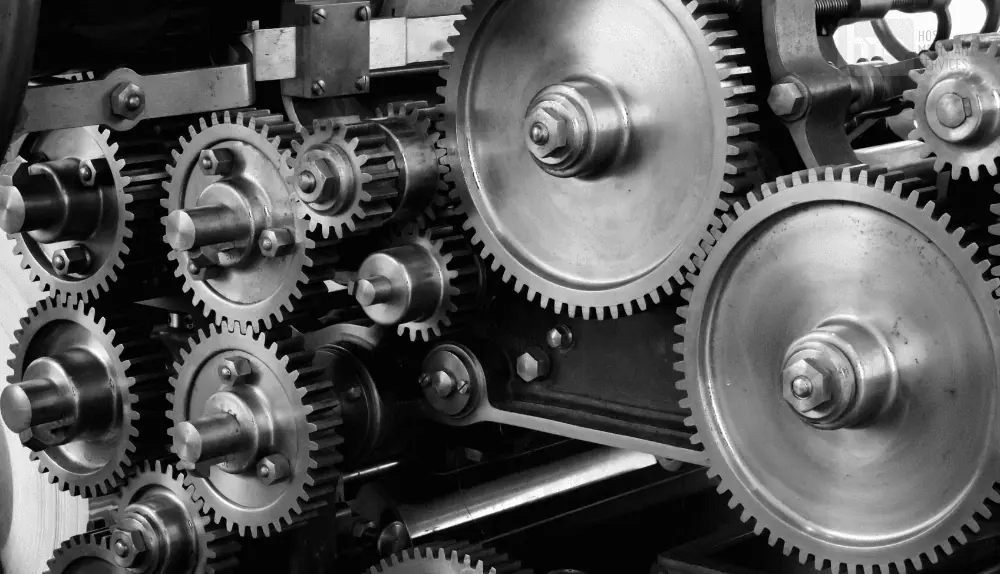Introduction To Equipment Financing
Importance of Equipment Financing for Businesses
In today’s competitive business landscape, having the right equipment is crucial for success. Whether it’s machinery, vehicles, technology, or specialized tools, equipment plays a vital role in enhancing productivity, improving efficiency, and maintaining a competitive edge. However, the high costs associated with purchasing equipment outright can pose a significant challenge for many businesses, especially small and medium-sized enterprises (SMEs). This is where you can finance equipment with loan in 2024. This article will guide you through the entire concept of equipment financing.
Introducing the Concept of Obtaining Loans for Equipment Purchases
Equipment financing offers businesses the opportunity to acquire the necessary equipment through loans specifically designed for this purpose. By opting for equipment loans, businesses can avoid the upfront financial burden and spread the cost of the equipment over some time. This allows them to access modern and efficient equipment without depleting their working capital or sacrificing other essential investments. In the following sections, we will explore the various aspects of financing equipment with a loan in 2023, including loan options, application processes, considerations, and repayment strategies.
Understanding Equipment Financing

Definition and Benefits of Equipment Financing
Equipment financing refers to the process of acquiring equipment for business purposes through the use of loans or leasing arrangements. This financing option provides businesses with several benefits. Firstly, it allows companies to preserve their working capital and maintain a healthy cash flow by avoiding large upfront equipment purchase costs. Secondly, equipment financing enables businesses to access state-of-the-art equipment, enhancing productivity, efficiency, and competitiveness. Additionally, financing equipment often comes with tax benefits, such as deducting interest expenses or claiming depreciation on the equipment.
Types of Equipment that Can Be Financed
A wide range of equipment can be financed through equipment loans. This includes, but is not limited to:
- Manufacturing equipment: Machinery, tools, and systems used in production processes.
- Construction equipment: Excavators, bulldozers, cranes, and other equipment used in the construction industry.
- Medical equipment: Diagnostic tools, imaging machines, surgical instruments, and other medical devices.
- IT and technology equipment: Computers, servers, software, networking devices, and telecommunications equipment.
- Commercial vehicles: Trucks, vans, forklifts, and other vehicles used for transportation or logistics.
- Restaurant and hospitality equipment: Cooking appliances, refrigeration units, point-of-sale systems, and furniture for restaurants, hotels, and other hospitality businesses.
Different Loan Options for Equipment Financing
- Traditional Bank Loans: Many banks offer equipment financing loans with fixed interest rates and repayment terms. These loans typically require collateral and a thorough evaluation of the borrower’s creditworthiness.
- Equipment Leasing: Leasing allows businesses to rent equipment for a specified period, typically with an option to purchase at the end of the lease term. This option is suitable for businesses that require equipment for a shorter duration or prefer flexibility in upgrading to newer models.
- Online Lenders: Online lending platforms provide a convenient and streamlined process for obtaining equipment loans. They often have less stringent eligibility criteria and faster approval times compared to traditional banks.
- Government-Sponsored Loan Programs: Various government entities offer loan programs specifically aimed at promoting small business growth. These programs may provide favorable terms, lower interest rates, or assistance to businesses in specific industries or sectors.
Preparing for Equipment Financing

Assessing Your Equipment Needs
Before seeking equipment financing, it’s essential to assess your specific equipment needs. Consider the nature of your business operations and identify the equipment required to enhance productivity or expand your services. Conduct a thorough evaluation of your current equipment inventory and determine if any upgrades or additions are necessary. Engage with relevant stakeholders, such as department heads or equipment operators, to gather insights and ensure you have a comprehensive understanding of your equipment requirements.
Determining Your Budget and Financial Capabilities
It is crucial to establish a clear budget and assess your financial capabilities when considering the best equipment financing. Evaluate your business’s financial health and determine the maximum amount you can allocate towards equipment purchases or lease payments. Consider factors such as existing debt obligations, cash flow projections, and long-term financial goals. This evaluation will help you understand the affordability of the financing options available to you and ensure you make realistic financial commitments.
Researching Equipment Vendors and Lenders
Conduct thorough research to identify reputable equipment vendors and lenders in your industry. Seek recommendations from trusted business partners or industry associations, and explore online resources to compile a list of potential vendors and lenders. Compare their offerings, such as equipment quality, warranty options, loan terms, interest rates, and customer reviews. Look for vendors and lenders with experience in your specific industry, as they may have a better understanding of your equipment needs and financing requirements.
Understanding the Loan Application Process
Familiarize yourself with the loan application process to streamline your equipment financing journey. Each lender may have different requirements and procedures, so it’s essential to understand the documentation and information you need to provide. Common requirements include financial statements, business plans, tax returns, bank statements, and details about the equipment being financed. Take the time to gather and organize these documents in advance to expedite the application process. Additionally, be prepared to provide any additional information or clarifications requested by the lender.
Choosing the Right Loan Option

Exploring Traditional Bank Loans for Equipment Financing
Traditional bank loans are a common option for equipment financing. Banks offer loans with fixed interest rates and structured repayment terms. These loans often require collateral and a comprehensive evaluation of the borrower’s creditworthiness. To explore this option, contact local banks or financial institutions and inquire about their equipment financing programs. Be prepared to provide detailed financial information and business documents during the application process.
Discussing Alternative Lending Options, such as Online Lenders or Equipment Leasing Companies
In addition to traditional bank loans, alternative lending options have gained popularity in recent years. Online lenders provide a convenient and accessible way to obtain equipment financing. They typically have less stringent eligibility criteria, and faster approval times, and offer flexible loan options. Equipment leasing companies offer an alternative approach, allowing businesses to rent equipment for a specific period. Leasing can be advantageous for businesses that require equipment temporarily or prefer the flexibility to upgrade to newer models.
Comparing Loan Terms, Interest Rates, and Repayment Options
When evaluating loan options for equipment financing, it’s essential to compare loan terms, interest rates, and repayment options. Request loan quotes from different lenders, including banks, online lenders, and leasing companies. Pay attention to factors such as the interest rate, loan duration, fees, and any potential penalties. Consider the total cost of the loan over its lifetime and assess how well the loan terms align with your financial capabilities. Additionally, evaluate the repayment options, such as monthly installments or seasonal payments, to ensure they suit your business’s cash flow.
Considering Government-Sponsored Loan Programs for Equipment Financing
Government-sponsored loan programs can be valuable resources for businesses seeking equipment financing. Many government entities offer loan programs specifically designed to support small business growth and development. These programs may provide favorable terms, lower interest rates, or assistance to businesses in specific industries or sectors. Research available government-sponsored loan programs at the federal, state, and local levels. Review eligibility criteria, application requirements, and any specific provisions related to equipment financing.
Applying for an Equipment Loan
Gathering the Necessary Documentation
Before applying for an equipment loan, it’s crucial to gather the necessary documentation to support your application. The specific requirements may vary depending on the lender, but commonly requested documents include:
- Business financial statements: This includes income statements, balance sheets, and cash flow statements.
- Personal financial statements: If you are a small business owner, you may need to provide your personal financial information.
- Business plan: A comprehensive business plan outlining your goals, strategies, and financial projections can strengthen your loan application.
- Tax returns: Provide several years’ worth of business and personal tax returns.
- Bank statements: Recent bank statements demonstrate your cash flow and financial stability.
- Equipment information: Details about the equipment you intend to finance, including its cost, specifications, and vendor quotes.
Ensure that you have organized and prepared these documents to streamline the application process.
Completing the Loan Application Accurately
When completing the loan application, accuracy and attention to detail are crucial. Follow the lender’s instructions and provide all the required information accurately. Pay close attention to details such as your business’s legal name, contact information, and financial figures. Be prepared to answer questions about your business, its operations, and the purpose of the equipment loan. Double-check your application to minimize errors or omissions that could delay the process or impact the approval decision.
Submitting the Application to the Chosen Lender
Once you have completed the loan application, gather all the supporting documentation and submit them to the chosen lender. Some lenders offer online application portals, while others may require physical copies. Follow the lender’s submission guidelines and ensure that you have included all the required documents. Consider keeping copies of all submitted materials for your records.
Understanding the Loan Approval Process and Potential Timelines
The loan approval process can vary in duration depending on the lender and the complexity of your application. After submitting your application, the lender will review your documents, evaluate your creditworthiness, and assess the viability of the equipment purchase. They may conduct a detailed analysis of your financial statements, credit history, and business performance. This process can take several days to a few weeks, depending on the lender’s internal processes. Some lenders may request additional information or clarification during this stage.
Once the lender has reviewed your application, they will notify you of their decision. If approved, they will provide you with the loan terms, including the interest rate, repayment schedule, and any conditions or requirements. If the loan is not approved, take the opportunity to understand the reasons behind the decision and explore alternative options.
Loan Approval and Acquisition of Equipment
Explaining the Loan Approval Criteria
Loan approval criteria vary among lenders, but some common factors they consider include:
- Creditworthiness: Lenders assess your credit history, including your credit score and payment history, to determine your ability to repay the loan.
- Financial Stability: Lenders examine your business’s financial health, including revenue, profitability, and cash flow, to gauge your ability to meet loan obligations.
- Collateral: Some loans may require collateral, such as the equipment being financed or other business assets, which the lender can claim if you default on the loan.
- Business Plan and Purpose: Lenders assess your business plan and the intended use of the equipment to evaluate the viability and potential return on investment.
Understanding the loan approval criteria helps you prepare and strengthen your application based on the lender’s specific requirements.
Discussing the Potential Need for Collateral or a Down Payment
Depending on the loan type, lenders may require collateral or a down payment. Collateral provides security for the lender in case of default, and it can be the equipment itself or other valuable assets. A down payment is a portion of the equipment’s cost that you pay upfront, reducing the loan amount. The need for collateral or a down payment varies based on factors such as your creditworthiness, the loan amount, and the equipment’s value. Discuss these requirements with the lender and be prepared to provide collateral or make a down payment if necessary.
Highlighting the Importance of Reviewing Loan Agreements and Terms Carefully
Before accepting a loan offer, it’s crucial to review the loan agreement and terms carefully. Pay attention to the following key aspects:
- Interest Rate: Understand the interest rate, whether it’s fixed or variable, and how it will impact your loan repayments over time.
- Repayment Terms: Review the repayment schedule, including the frequency of payments (monthly, quarterly, etc.) and the duration of the loan.
- Fees and Penalties: Identify any additional fees or penalties associated with the loan, such as origination fees, prepayment penalties, or late payment charges.
- Default and Collateral Terms: Familiarize yourself with the conditions under which the lender can declare a default and seize the collateral, if applicable.
If there are any terms or clauses you don’t understand, seek clarification from the lender or consult with a legal professional to ensure you fully comprehend the loan agreement before signing.
Obtaining the Necessary Funds and Acquiring the Equipment
Once your loan is approved, the lender will provide you with the necessary funds to acquire the equipment. The funds are typically transferred directly to the equipment vendor or seller. Coordinate with the vendor to complete the purchase, ensuring that the equipment meets your specifications and requirements. Arrange for delivery, installation, and any necessary training or maintenance services. Keep records of the equipment purchase, loan disbursement, and any related documentation for future reference.
Repaying the Equipment Loan
Understanding the Repayment Structure and Options
It’s essential to understand the repayment structure and options for your equipment loan. Review the loan agreement to determine the repayment schedule, including the frequency of payments (monthly, quarterly, etc.) and the duration of the loan. Understand whether the interest rate is fixed or variable and how it may impact your repayments over time. Additionally, familiarize yourself with any specific repayment options available, such as making extra payments or adjusting the repayment terms.
Exploring Strategies for Managing Loan Repayments
Managing loan repayments effectively is crucial to maintain financial stability. Consider the following strategies:
- Budgeting: Create a budget that accounts for loan repayments and ensures sufficient cash flow to cover the payments. Monitor your finances regularly and adjust your budget as needed.
- Cash Flow Management: Optimize your cash flow by streamlining expenses, invoicing promptly, and maintaining healthy customer payment practices. Efficient cash flow management can help ensure you have funds available for loan repayments.
- Communication with Lender: If you encounter difficulties in making loan repayments, communicate with your lender promptly. They may offer alternative solutions, such as temporary payment modifications or restructuring the loan, to help you manage repayments during challenging times.
Discussing the Potential Consequences of Defaulting on Loan Payments
Defaulting on loan payments can have severe consequences. These may include:
- Damage to Credit Score: Defaulting on loan payments can negatively impact your credit score, making it harder to secure future loans or obtain favorable terms.
- Legal Action: Lenders may take legal action to recover the outstanding loan balance, which could result in additional costs and legal consequences for your business.
- Collateral Seizure: If you provide collateral for the loan, defaulting on payments may result in the lender seizing and liquidating the collateral to recoup their losses.
Considering Early Repayment or Refinancing Options
Early repayment or refinancing can be viable options to consider. Early repayment involves paying off the loan before the scheduled term ends, potentially reducing the total interest paid. However, some loans may have prepayment penalties, so review your loan agreement or consult with the lender to understand any associated fees. Refinancing involves replacing the existing loan with a new loan that offers more favorable terms, such as a lower interest rate or extended repayment period. Assess the potential benefits and costs of early repayment or refinancing to determine if it aligns with your financial goals and circumstances.
Bottom Line
Financing equipment with a loan is a vital aspect of business growth and development. Throughout this article, we have explored key points to consider when financing equipment with a loan in 2023. We discussed the importance of understanding equipment financing, assessing needs, determining budgets, and researching vendors and lenders. We also explored loan options, the application process, loan approval, and the acquisition of equipment. Repayment strategies, potential consequences of default, and early repayment or refinancing options were also highlighted.
Careful planning and research are essential when seeking equipment financing. By understanding the loan options available, comparing terms and interest rates, and assessing your business’s financial capabilities, you can make informed decisions. It is crucial to review loan agreements carefully and seek professional advice if needed to ensure a thorough understanding of the terms and obligations.
In conclusion, businesses should explore various loan options, consider their unique circumstances, and seek expert guidance when necessary. By doing so, they can secure equipment financing that aligns with their needs, enhances productivity, and contributes to their long-term success.
FAQs
Q. Can I use previously financed equipment as collateral for a new equipment loan?
Yes, in many cases, you can use equipment that has been previously financed as collateral for a new equipment loan. This is known as equipment refinancing or using the existing equipment as collateral. The lender will assess the value and condition of the equipment to determine its eligibility as collateral for the new loan.
Q. How does equipment financing with a loan work?
Equipment financing involves obtaining a loan specifically for purchasing or leasing equipment. The lender provides the funds necessary to acquire the equipment, and you repay the loan over a specified period with interest.
Q. Can I finance used equipment with an equipment loan in 2023?
Yes, it is possible to finance used equipment with an equipment loan in 2023. Many lenders offer financing options for both new and used equipment. However, it’s important to note that the terms and conditions, including interest rates, may vary for used equipment loans compared to loans for new equipment. The lender may consider factors such as the age, condition, and resale value of the used equipment when determining loan eligibility and terms.
Q. What factors do lenders consider when approving an equipment loan in 2023?
Lenders typically assess various factors, including your creditworthiness, business financials, the value and condition of the equipment, the intended use of the equipment, and your ability to repay the loan.
Q. Are there any alternatives to equipment loans for financing equipment?
Yes, there are alternative options for financing equipment, such as equipment leasing, equipment rental, or seeking financing through equipment manufacturers or vendors. It’s important to compare the terms, costs, and benefits of each option to determine the best fit for your business.

